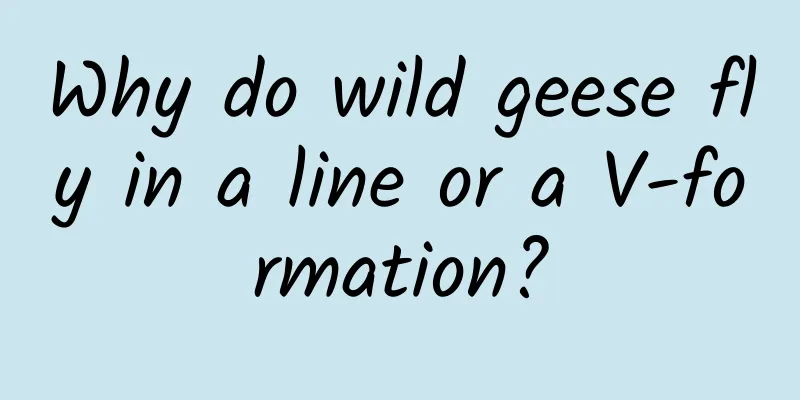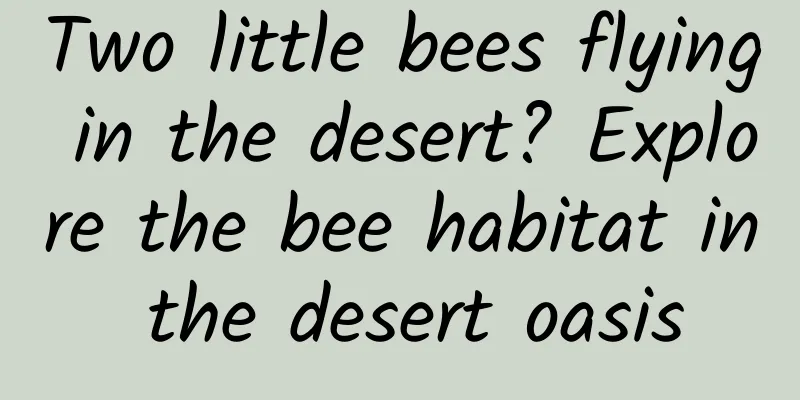Why do wild geese fly in a line or a V-formation?

|
This article was reviewed by Zhu Guangsi, a popular science writer and a member of the Beijing Popular Science Writers Association "Attention everyone! Maintain formation!" When people mention wild geese, they always think of the shape of a human or a line. At this time of year, wild geese migrate south and their figures can always be seen in the sky. On the evening of October 17, flocks of wild geese flew over the Bund in Nanjing, changing their formations in the air, sometimes in a V-shape and sometimes in a straight line. When many netizens saw this scene, they lamented that they saw the scene that once appeared in textbooks. Why do flocks of wild geese maintain this formation when flying? Is it for the sake of neatness and to make it easier to identify their number? Or is there another reason? In addition to wild geese, what other animals have similar "rules"? Let's go into the world of animals together today! Why do wild geese form a V-shape when flying? Wild geese are a type of bird that people are very familiar with. Common species include the swan goose, bean goose, bar-headed goose and greylag goose, which are generally referred to as "wild geese." Wild geese are famous for flying in formations, sometimes in a V-shape and sometimes in a straight line. Some scientists believe that they do this not because there is a deep connection between individuals, but mainly to save energy and complete long-distance journeys more smoothly. In 1970, Risaman and Scholenberg used aerodynamic theory to give the first estimate that a V-formation of 25 geese could fly 71% farther than a single goose. In a V-shaped flying formation of geese, when the lead goose flying in the front flaps its wings, a low-pressure area is formed behind it. The geese following closely behind can use it to reduce air resistance and thus save energy, just like what a person sitting on the back of a motorcycle feels. But the leading goose in the front is not so relaxed, as it easily gets tired. So when the flight distance is long, the geese need to change formation frequently and take turns to be the leading goose. At present, the secret of wild geese flight has not been completely solved. The angle of the "V" formation of wild geese often changes, ranging from 24 degrees to 122 degrees, and most of the time, they will choose the "straight" formation. Only in 20% of the flight time will they choose the "V" formation. Animal organization and discipline We all know that human life is organized and disciplined to a certain extent, and the same is true for some animals. Since nature is full of dangers, most animals live in groups. From ants and bees to elephants and whales, many animals live in groups in one or more families. Animals that live alone usually have unique survival skills, such as spiders, tigers, black-footed cats, etc., while most animals must have a certain degree of organizational discipline if they want to live in collaboration. So, how do animals stay organized and disciplined? The family is the key to maintaining organization and discipline In bee and ant colonies, the division of labor is very clear. They have different body structures at birth, so bees have worker bees, and ants have worker ants and soldier ants, all of which belong to the "class" that does not reproduce. Some individuals in the colony are fertile and are responsible for reproduction. This kind of population where some individuals have no right to reproduce and only serve as tools is the first characteristic of true sociality. Eusocial animals Eusocial animals are animals that live in groups with a highly social organization. A hive of bees and ants are all descendants of the same queen bee or queen ant. The males are very weak and are only responsible for mating. It is impossible for other outsiders to join. This is a small country ruled by the queen. Early biological research believed that true sociality only exists in insects. Now some scholars believe that naked mole rats and meerkats are also true social animals. However, the sociality of meerkats is closer to matriarchal society, that is, having a mother and an unfixed father. Many other animals follow a similar path. For example, hyenas are also ruled by the largest female, who has the right to eat first, give birth first, etc. Like meerkats, hyenas have non-fixed fathers, which is fundamentally different from ants and bees. Each meerkat group is generally composed of 2 to 50 meerkats, and the internal rulers are male and female leaders, of which the male leader is selected by the female leader. Under normal circumstances, the female leader will kill all the young animals that are not born by them to ensure that their offspring have the best chance of survival. They will also exile or kill the mothers who give birth to young animals that offend them. Therefore, most meerkats in the same group are all the queen's siblings or children. This matriarchal social structure is beneficial for males to jointly take care of young in more difficult environments (because each of them can be the father of the child), and this was also the model used by early humans. Recent studies have found that their calls of different tones represent different signals, forming a relatively complete language system in the animal kingdom. This can be said to be the result of their evolution after living in groups for a long time. Make rules by force In contrast, a group of deer or sheep is just a group of deer living together. They do not have a clear division of labor, and herbivores do not involve the issue of food priority. When competing for reproductive rights, they need to duel to produce the strongest male in the group to give priority to selecting females. The advantage of this kind of competition is that, although their sociality is not as high as that of ants, they do have a stronger and more advanced ability to continue to survive in nature because they have the ability to go against society - antisociality. Many mammals that live in groups, such as wolves, macaques, gorillas, cows, horses, etc., will have males in the group compete for dominance. The winner is the boss, and the other individuals must obey him. For example, when the wolf pack gathers, the wolves will bow down to show respect and obedience to the leader. When the leader is angry, the subordinate wolves will also show their necks to the leader to show submission. The pictures in this article with the "Science Popularization China" watermark are all from the copyright gallery. The pictures are not authorized for reprinting. |
<<: They hold up half of the space: The universe is neither kind nor generous to women
Recommend
Unveiling the secrets of the rainforest's first camouflage master, the "dead leaf butterfly"
The dead leaf butterfly, commonly known as the &q...
Seabirds are suffering from chronic diseases from eating plastic! But they think they are eating seafood...
Seabirds have become sick from eating plastic, an...
What’s the most effective way to sell products through short videos? Just read this one
Using short videos to sell goods on platforms suc...
From mid-to-late stage lung cancer to successful anti-cancer treatment, this doctor has been actively fighting cancer for 9 years and summed up these 6 points
Many people are afraid of cancer and think that i...
Xiaohongshu platform’s distribution strategy and case analysis
According to relevant data, China's cosmetics...
Facing disaster
Smiling Georgia medical volunteers made a "h...
Listen to these 30 books to talk to anyone
Have you ever encountered these scenarios? Poor f...
DeepMind AI makes another breakthrough, tracing the traces of ancient human writing
Written by: Yang Xiao It is undeniable that artif...
Huawei App Market Paid Promotion Operation Guide!
1. Developer Registration First, you need to regi...
The Earth we live on actually has a "dark history"?
Since the advent of satellites, people have known...
Three common breakfast combinations are actually very unhealthy. Are you one of them?
Recently, the topic #Skipping breakfast makes you...
Online Event Promotion Implementation Manual
What is event operation? My understanding of even...
Keep product experience report, tell you the secret of user growth
1. Experience the environment Test model: iPhone6...
These tricks to pick up girls are also very suitable for writing advertising copy
What you are flirting with girls is actually thei...
Douyin operation: 4 tips to teach you how to create a Douyin hit from scratch!
Regarding "Tik Tok", many people will r...









